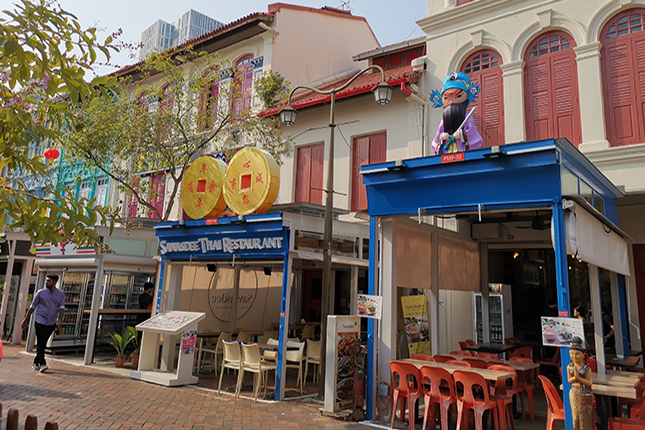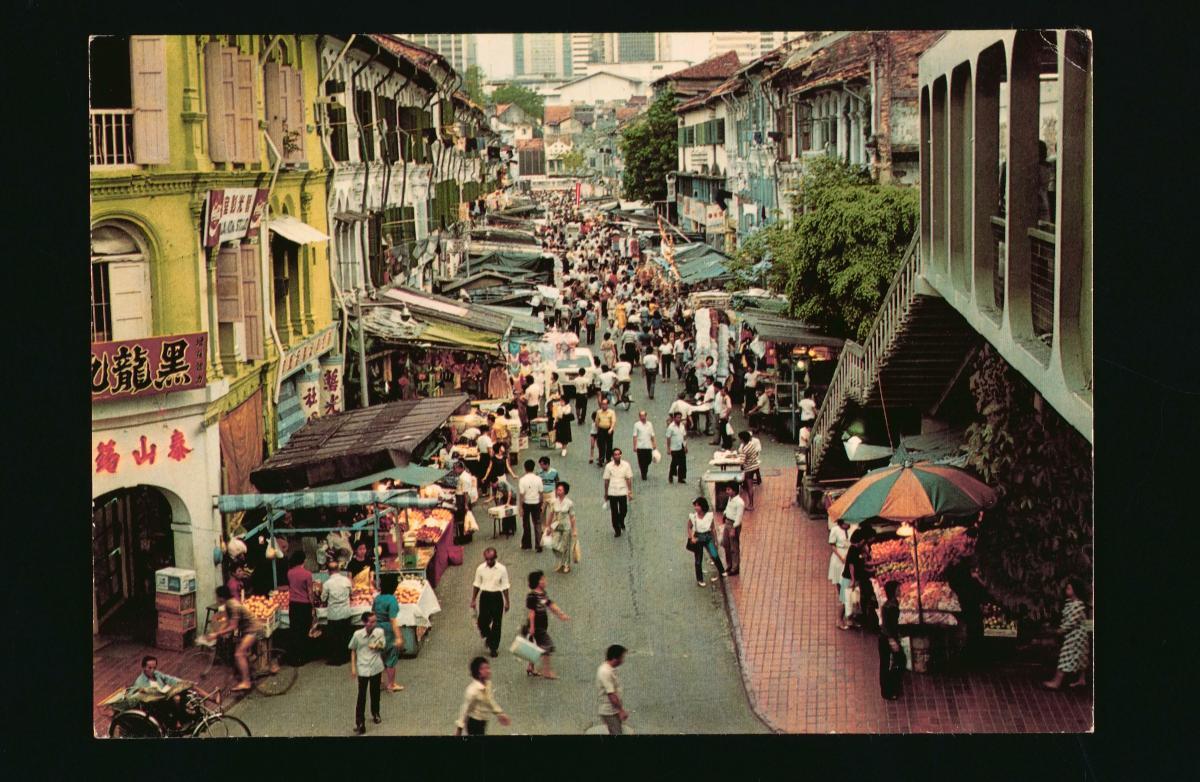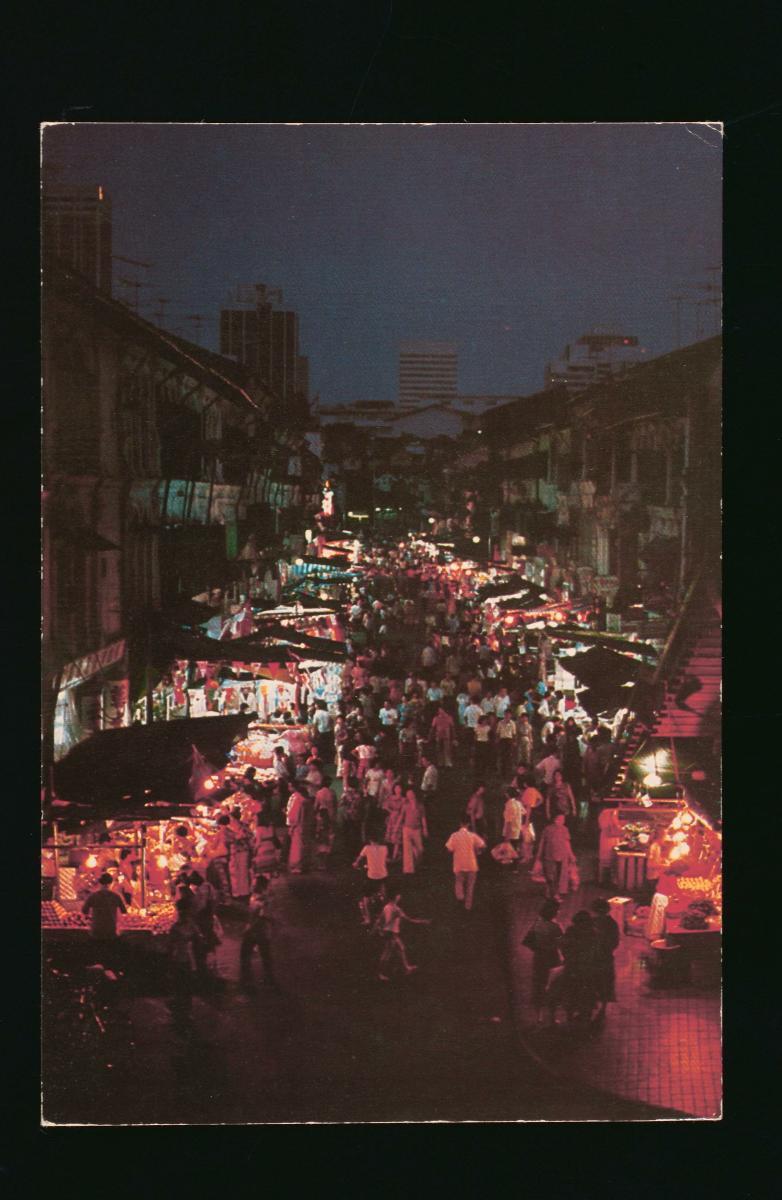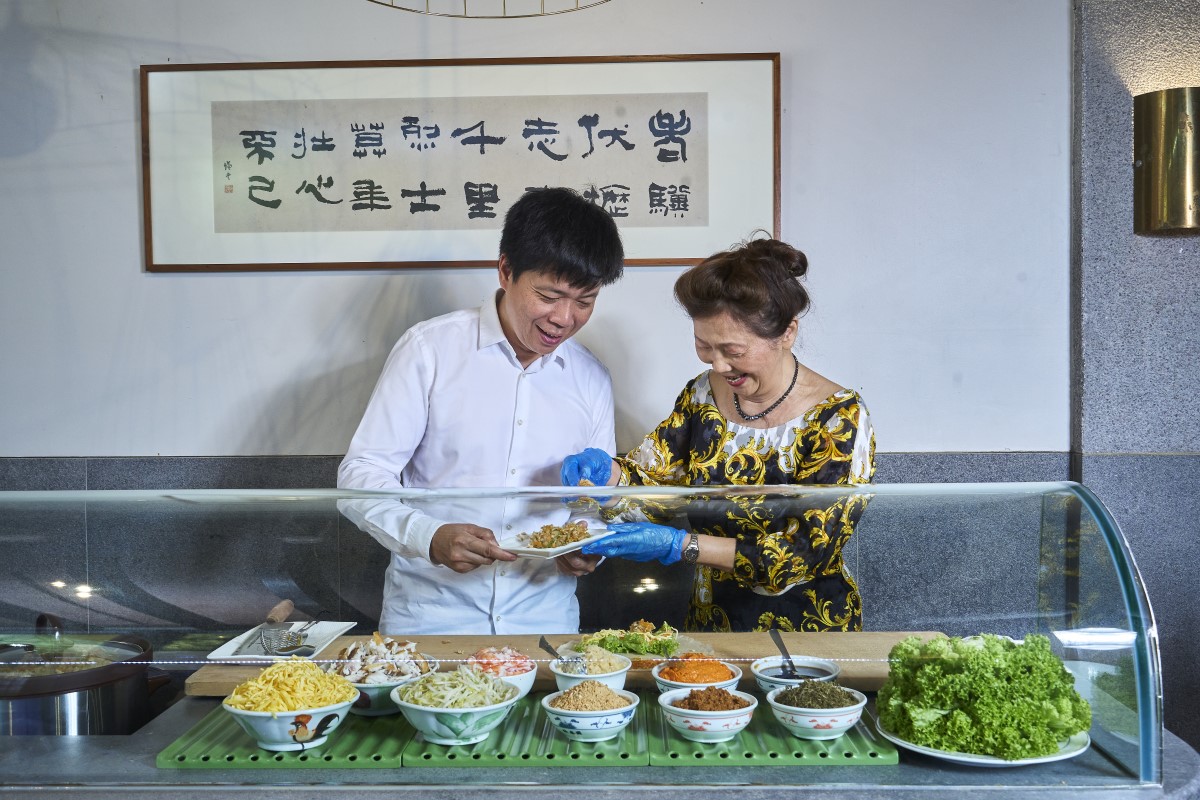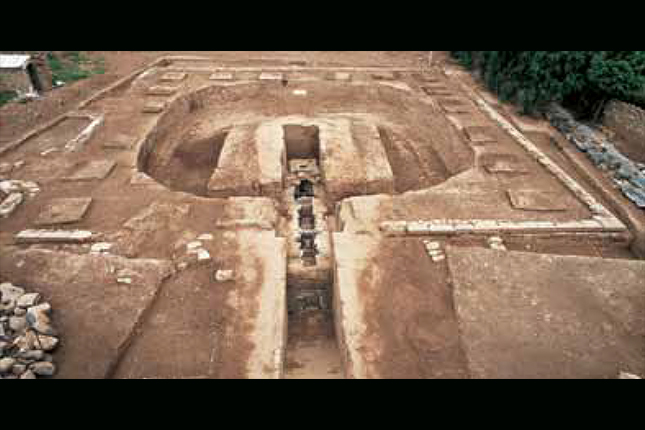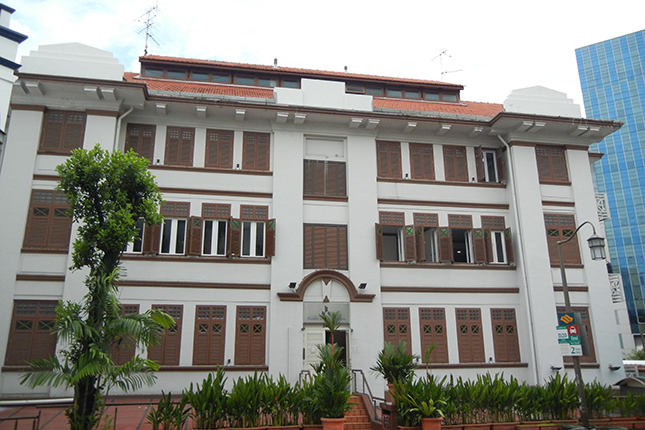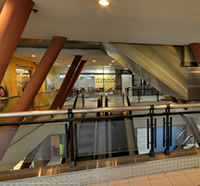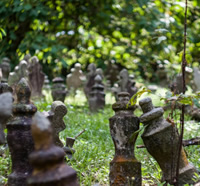With its colourful past, it can be said that Pagoda Street was a street of contrasts. A major historical highlight was Queen Elizabeth II’s visit to Pagoda Street in 1972.
On one hand, Pagoda Street was once home to opium dens and poorly maintained coolie quarters in the 19th and early 20th centuries, including the largest coolie firm, the infamous Kwong Hup Yuen. On the other, devotees would throng the Sri Mariamman Temple—a stone’s throw away—with great devotional fervour. While street peddlers would squat along the pavements at the temple gates to ply their wares—displayed on top of bags, newspapers or scraps of cloth.
Featuring bright red wooden shutters and clean cream-coloured walls, the shophouse unit at 34 Pagoda Street is visually appealing to locals and tourists alike.
Unbeknownst to many, this attractive unit was once an operational opium den. During the 19th century, it was one of a myriad of drug houses scattered throughout Chinatown.
In Singapore’s early days, the highly addictive properties of opium hit both the rich and poor alike. Arriving at this decrepit shophouse from their lofty mansions, the rich were accustomed to smoking high-grade opium in exclusive private rooms.
The majority of smokers, however, could only afford to smoke dregs using shared common pipes. Many Chinese coolies were habitual smokers of this narcotic drug; using up their wages to purchase opium, they were left with little or no money to send to their families in China.
While the British colonial authorities did tolerate opium use, it was eventually banned in 1946.
Today, the shophouse serves as a reminder of the multi-faceted history of Chinatown—a mix of the sacred and the secular, symbolised respectively by the revered Hindu temple in contrast with its darker side of history associated with the wretched opium dens.
Buildings and sites featured on Roots.SG are part of our efforts to raise awareness of our heritage; a listing on Roots.SG does not imply any form of preservation or conservation status, unless it is mentioned in the article. The information in this article is valid as of September 2019 and is not intended to be an exhaustive history of the site/building.




